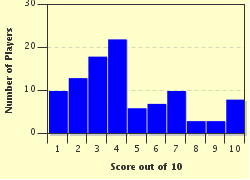Quiz Answer Key and Fun Facts
1. We start in Italy, home to 50 UNESCO sites, and in particular in Andria in the Apulia region in the southeast part of the country. Constructed in the 1240s by Emperor Frederick II, this site appears on Italy's one-cent Euro coins. What is this UNESCO site?
2. We move now to China and its 47 UNESCO sites. Constructed in the early 15th century during the reign of the Yongle emperor, this complex in Beijing was visited annually by Ming and Qing emperors to pray for a good harvest. What is this UNESCO site?
3. Moving on to Spain, where there are 44 UNESCO sites, we find ourselves in the foothills of the Prades Mountains in southern Catalonia. Here we find the royal pantheon of the kings of the Crown of Aragon since James I (who reigned from 1213 until 1276). Which UNESCO site is this?
4. With 39 UNESCO sites, Germany is our next port of call, and specifically the state of Thuringia. The original castle on this site dates to the 11th century, although much of what remains is much more recent. Martin Luther translated the New Testament into German while in exile here. Which UNESCO site is this?
5. Remaining in Europe, we travel west to France, which also has 39 UNESCO sites. Specifically, we are visiting the area near Montbard, in the département of Côte-d'Or in the eastern part of the country. Here we find a site founded by Saint Bernard of Clairvaux in 1118 which provides a mix of Romanesque and Gothic architecture. Which UNESCO site is this?
6. We cross to the Americas next, to Mexico, where there are 32 UNESCO sites. We travel to the state of Veracruz on Mexico's east coast to find what remains of one of the largest and most important cities of the classic era of Mesoamerica. Each year in March a festival of indigenous and foreign cultural events is staged here. Which UNESCO site is this?
7. Heading back to Asia, out next port of call is India which also has 32 UNESCO sites, and specifically to the city of Thanjavur in the state of Tamil Nadu in the extreme south of the country. Having recently celebrated its millennium, its contribution to India's cultural and architectural history was celebrated on both postage stamps and currency. Which UNESCO site is this?
8. Our next stop is the UK, which has 28 UNESCO sites. Our pictured site in North Yorkshire features a Jacobean mansion, a Victorian church, an 18th-century landscaped garden and some of Europe's largest Cistercian ruins. Which UNESCO site is this?
9. Our penultimate stop is in Russia, home to 28 UNESCO sites, and specifically a former royal estate near Moscow. The building itself was revolutionary and would have a significant effect on the development of Russian ecclesiastical architecture. Which UNESCO site is this?
10. We round out the Top 10 in the USA, home to 22 UNESCO sites. We travel to the northwestern corner of New Mexico to find America's most important pre-Columbian cultural and historical area. Dating back to between 900 and 1150 A.D., which UNESCO site is this?
Source: Author
EnglishJedi
This quiz was reviewed by FunTrivia editor
trident before going online.
Any errors found in FunTrivia content are routinely corrected through our feedback system.

